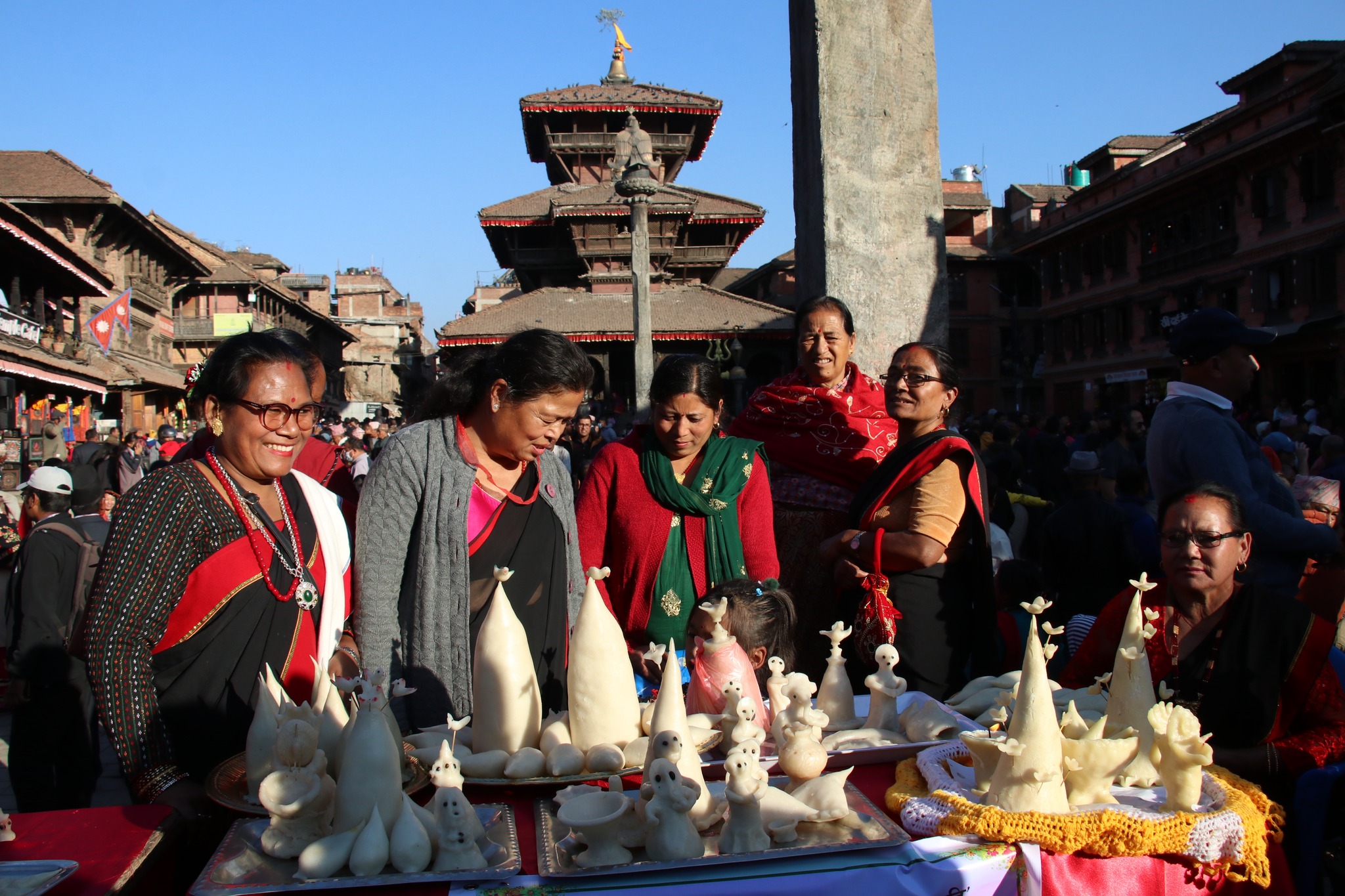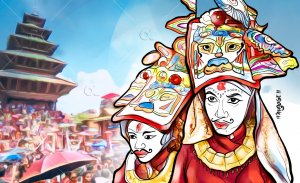On 14 April 2016, a 6.2 magnitude earthquake hit Japan’s southernmost island of Kyushu, toppling buildings and sending residents rushing into the streets. Hundreds of aftershocks – one an even stronger 7.0 quake – continued for days, killing 49 people, injuring 1,500 and forcing tens of thousands from their homes.
News spread immediately around the globe on social media.
“Earthquake just happened,” Margie Tam posted from Hong Kong. “R u ok kumamon?”
“Are Kumamon and his friends safe?” wondered Eric Tang, a college student.
“Pray for Kumamoto & Kumamon,” wrote Ming Jang Lee from Thailand, a phrase that would be repeated thousands of times.
Kumamoto is a city of 700,000 in a largely agricultural province in south-western Japan. But what, or more precisely who, is Kumamon? And why in the wake of an immense natural disaster did concern for earthquake victims focus on him, specifically?
That’s a bit more complicated.
It is 12 March 2016, one month before the earthquake. Kumamon bounds onto an outdoor stage at the opening event of his birthday party in Kumamoto. About 150 guests – mostly women – cheer, clap and whistle.
Kumamon waves and bows. He is about 1.5 metres tall, with black glossy fur, circular red cheeks and wide, staring eyes. He’s dressed for the occasion in a white satin dinner jacket trimmed in silver and a red bow tie.
One woman in the crowd holds a Kumamon doll swaddled in a baby blanket. Another has dressed her doll in a grey outfit matching her own. She says it took her a month to sew. A number of fans have pasted red paper circles on their cheeks to mimic his. Those in the first row arrived at 3am to snag their prime spots to greet the object of their intense though difficult-to-explain affection.
“Actually, I have no idea why I love him so much,” says Milkinikio Mew, who flew from Hong Kong with friends Lina Tong and Alsace Choi to attend the three-day-long festival, even though Hong Kong is holding its own birthday party for Kumamon. She slept in, showing up at 6am for the 10am kick-off, so had to settle for a seat in the last row.
Kumamon is not exactly a cartoon character, though he does appear in a daily newspaper comic strip. He’s not a brand icon either, like Hello Kitty, though like her, he does not speak and, also like her, his image certainly moves merchandise.
He’s not sexy, but when the Empress Michiko met Kumamon – at her request – during the imperial couple’s visit to Kumamoto in 2013, she asked him, “Are you single?”
Kumamon is a yuru-kyara (inset), or ‘loose character’, one of the cuddly creatures in Japan that represent everything from towns and cities to airports and prisons. The word is sometimes translated as ‘mascot’, but yuru-kyara are significantly different from mascots in the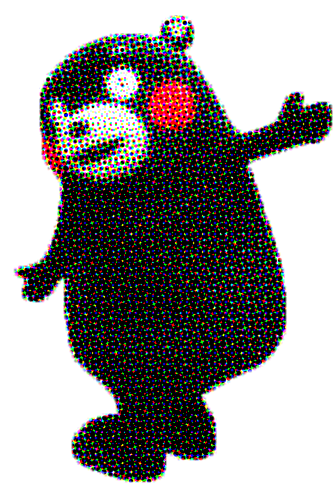 West, such as those associated with professional sports teams, which tend to be benign, prankish one-dimensional court jesters that operate in the narrow realm of the sidelines during game time.
West, such as those associated with professional sports teams, which tend to be benign, prankish one-dimensional court jesters that operate in the narrow realm of the sidelines during game time.
Kumamon has a far wider field of operation as the yuru-kyara for Kumamoto Prefecture. He has become more than a symbol for that region, more than merely a strategy to push its tourism and farm products. He is almost regarded as a living entity, a kind of funky ursine household god (it is perhaps significant that the very first licensed Kumamon product was a full-sized Buddhist shrine emblazoned with his face). He hovers in a realm of fantasy like a character from children’s literature, a cross between the Cat in the Hat and a teddy bear.
Kumamon has personality. “Cute and naughty,” Tam explains, later, when I ask what about Kumamon made her care about him enough to be concerned immediately after the earthquake.
She wasn’t alone. After the April quake, Kumamon’s Twitter feed, which has nearly half a million followers and is typically updated at least three times a day, stopped issuing communications. With a thousand buildings damaged, water to the city cut, a hospital jarred off its foundations, and 44,000 people out of their homes, the prefectural government, which handles Kumamon’s business dealings and appearances, had more important things to do than stage-manage its fictive bear.
But Kumamon was missed.
“People are asking why Kumamon’s Twitter account has gone silent when the prefecture needs its mascot bear more than ever,” the Japan Times noted on its Facebook page on 19 April.
Into the vacuum came hundreds, then thousands of drawings, posted by everyone from children to professional manga artists, not only from Japan, but from Thailand, Hong Kong, China. They waged an impromptu campaign of drumming up support for earthquake relief using the bear, which stood in for the city itself and its people. Kumamon was depicted leading the rescue efforts, his head bandaged, lifting stones to rebuild the tumbled walls of Kumamoto Castle, propping up tottering foundations, enfolding children in his arms.
***
Cuteness is so associated with Japan that the actual country – mile after mile of unadorned concrete buildings alternating with rolling green fields and periodic densely packed cities – can come as something of a surprise. The Tokyo subway is jammed with hurrying businessmen in dark suits, rushing women in paper masks, racing kids in plain school uniforms. Cute characters such as Kumamon can be hard to spot, and to expect otherwise is like going to America and expecting everyone to be a cowboy.
Still, there are pockets of cuteness to be found: tiny yuru-kyara charms dangling off backpacks or peeking from posters or construction barriers in the form of baby ducks.
But not everywhere – not even in most places.
Even in Kumamoto during Kumamon’s birthday weekend. Exit from the Shinkansen bullet train at Kumamoto station and there is nothing special on the platform, not so much as a banner – not until you take the escalator down and catch a glimpse of the enormous head of Kumamon set up downstairs, along with a mock stationmaster’s office built for him. The train station shop is filled with Kumamon items, from bottles of sake to stuffed animals including, somewhat disturbingly, a plush set that pairs him with Hello Kitty, the wide-eyed bear directly behind the kneeling kitty in such a way as to suggest… well, you wonder if it’s deliberate.
In the city, his face is spread across the sides of an office building, with birthday banners hanging from the semi-enclosed shopping arcades that are a feature of every Japanese city.
Six years ago, Kumamoto wasn’t known for much. There is an active volcano, Mt Aso, nearby, and a 1960s reproduction of a dramatic 1600s-era castle that burned down in 1877. Kumamoto residents believed there was nothing in their city that anyone would want to visit. The region is largely agricultural, growing melons and strawberries.
But in 2010, Japan Railways was working to extend the Shinkansen bullet train to Kumamoto, and the city fathers were eager for tourists to use it. So they commissioned a logo to promote the area, hiring a designer who offered a stylised exclamation point (their official slogan, ‘Kumamoto Surprise’, was a bright spin on the fact that many Japanese would be surprised to find anything in Kumamoto worth seeing).
The exclamation point logo was a red blotch, resembling the sole of a shoe. The designer, seeking to embellish it, and knowing the popularity of yuru-kyara, added a surprised black bear. Kuma is Japanese for bear. Mon is local slang for ‘man’.
Paired with a mischievous personality – Mew calls him “very naughty” – Kumamon made headlines after Kumamoto held a press conference to report that he was missing from his post, having run off to Osaka to urge residents there to take the train. The stunt worked. 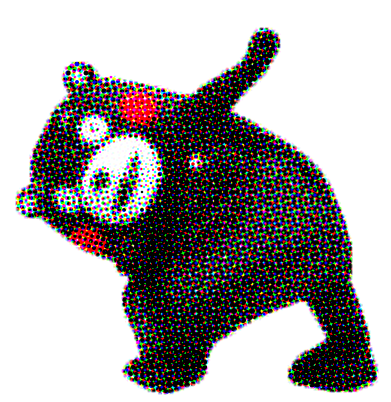 Kumamon was voted the most popular yuru-kyara in 2011. (Japan has a national contest, the Yuru-kyara Grand Prix, held in November. The most recent one was attended by 1,727 different mascots and nearly 77,000 spectators. Millions of votes were cast.)
Kumamon was voted the most popular yuru-kyara in 2011. (Japan has a national contest, the Yuru-kyara Grand Prix, held in November. The most recent one was attended by 1,727 different mascots and nearly 77,000 spectators. Millions of votes were cast.)
A few Kumamoto officials resisted Kumamon – their concern was he would scare off potential tourists, who’d worry about encountering wild bears, of which there are none in the prefecture. But the Kumamoto governor was a fan and cannily waived licensing fees for Kumamon, encouraging manufacturers to use him royalty-free.
Rather than pay up front, in order to get approval to use the bear’s image, companies are required to support Kumamoto, either by using locally manufactured parts or ingredients or by promoting the area on their packaging. It’s as if Mickey Mouse were continually hawking California oranges.
The side of the box of the Tamiya radio-controlled ‘Kumamon Version Buggy’, for instance, has photos of the region’s top tourist destinations. In one of the songs on the exercise DVD released on Kumamon’s birthday, as he leads his fans through their exertions, they grunt, “Toh-MAY-toes… straw-BEAR-ies… wah-TER-melons” – all agricultural products that are specialties of Kumamoto. Go into a grocery store and Kumamon smiles from every punnet of strawberries and honeydew wrapper.
The bullet train began service to Kumamoto on 12 March, so that date is now used as Kumamon’s official birthday. He was there to greet the first scheduled train, a moment recreated during his birthday fest.
Fans line up to hug him, often reaching back for a lingering last touch as they’re led off to make way for the next waiting fan. There is a tacit agreement to never allude to anything as crass as him being a man in a bear suit, to, if not accept Kumamon’s reality, pretend that he exists.
In 2014, Kumamon gave a news conference at the Foreign Correspondents’ Club of Japan, where his title was given as ‘Director of PR’. The journalists posed respectful questions. “How many staff do you have to help you out with your activities?” one asked. The answer – “We have about 20 staff members in our section” – was delivered by one of those subordinates, Masataka Naruo, who enjoys telling people that Kumamon is his boss.
(Opener) Photo: Barbarella Buchner/Flickr, Graphics: OnlineKhabar; Kumamon © Kumamoto Prefectural Government.
Shopping in Kumamoto the day before the start of the celebration, Mew and her friends wear Kumamon T-shirts and carry Kumamon backpacks. The three women show their discoveries to each other. They own a lot of Kumamon products already. Why buy more? What makes Kumamon so special? “Because he’s very cute,” says Tong, in English.
‘Cute’ is roughly translated to the Japanese word kawaii but it has broad, multi-layered meanings, covering a range of sweetly alluring images and behaviours. Not only does kawaii encompass the army of Japanese mascots, but a world of fashion that has adult women dressing as schoolgirls and schoolgirls dressing as goth heroines or Lolita seductresses, giving rise to ero-kawaii, or erotic kawaii, a mash-up of cute and sexy.
Babies are our model for cuteness. The two big details – big cheeks, big eyes – are straight out of Konrad Lorenz’s Kindchenschema, or ‘baby schema’, as defined in the Nobel Prize-winning scientist’s 1943 paper on the ‘innate releasing mechanisms’ that prompt affection and nurture in human beings: fat cheeks, large eyes set low on the face, a high forehead, a small nose and jaw, and stubby arms and legs that move in a clumsy fashion. And it doesn’t just apply to humans: puppies, baby ducks and other young animals are covered by Lorenz’s theory.
Experiments have demonstrated that viewing cute faces improves concentration and hones fine motor skills – useful modifications for handling an infant. A pair of Yale studies suggest that when people say they want to ‘eat up’ babies, it’s prompted by overwhelming emotions – caused, one researcher has speculated, by frustration at not being able to care for the cute thing, channelled into aggressiveness.
These emotions are triggered chemically, deep within the brain. Experiments hooking up volunteers to magnetic resonance imaging (MRI) scanners have shown how seeing cute creatures stimulates the brain’s pleasure centre, the nucleus accumbens, causing a release of dopamine, in a way similar to what happens when eating chocolate or having sex.
Women appear to feel this reaction more strongly than men. While biologically this is explained by the need to care for infants, society’s larger embrace of cuteness has led academics in gender studies to wonder whether cute culture is the sugar pill that sexism comes in – training women to be childlike – or whether it could instead be a form of empowerment in which young women take control of their own sexuality.
***
Nobody is cute in Shakespeare.
The word did not exist until the early 1700s, when the ‘a’ in ‘acute’ was replaced by an apostrophe – ’cute – and then dropped altogether, the sort of truncation for which frenetic Americans in their restive colonies were already notorious.
‘Acute’ came from acus, Latin for needle, later denoting pointed things. So ‘cute’ at first meant “acute, clever, keen-witted, sharp, shrewd” according to the 1933 edition of the Oxford English Dictionary, which doesn’t suggest the term could describe visual appearance. This older, ‘clever’ meaning lingers in expressions like “don’t be cute”.
The newer usage was still being resisted in Britain in the mid-1930s, when a correspondent at the Daily Telegraph included ‘cute’ on his list of “bastard American expressions”, along with ‘OK’ and ‘radio’. Not only is ‘cute’ unknown before 1700, but Lorenz’s Kindchenschema is largely absent from visual arts before the 20th century. Even babies in medieval artworks are depicted as wizened miniature adults.
Cute images of the kind we’ve become accustomed to began showing up around 1900. While purists fussed, popular culture was discovering the bottomless marketability of cute things. In 1909, Rose O’Neill drew a comic strip about ‘kewpies’ (taken from ‘cupid’, see inset) – preening babylike creatures with tiny wings and huge heads, which were soon being handed  out as carnival prizes and capering around Jell-O ads (to this day, Kewpie Mayonnaise, introduced in 1925, is the top-selling brand in Japan). Cuteness and modern commercialisation are intricately linked.
out as carnival prizes and capering around Jell-O ads (to this day, Kewpie Mayonnaise, introduced in 1925, is the top-selling brand in Japan). Cuteness and modern commercialisation are intricately linked.
Still, kewpies followed the lines of actual human anatomy more or less, the way that Mickey Mouse resembled a real mouse when he first appeared on film in 1928. A half a century of fine-tuning made him much more infantile, a process naturalist Stephen Jay Gould famously described in his ‘biological homage’ to Mickey. Gould observed that the mischievous and sometimes violent mouse of the late 1920s morphed into the benign, bland overseer of a vast corporate empire.
“He has assumed an ever more childlike appearance as the ratty character of Steamboat Willie became the cute and inoffensive host to a magic kingdom,” Gould writes.
In Japan, the national fascination with cuteness is traced to girls’ handwriting. Around 1970 schoolgirls in Japan began to imitate the caption text in manga comics – what was called koneko-ji, or ‘kitten writing’. By 1985, half of the girls in Japan had adopted the style, and companies marketing pencils, notebooks and other inexpensive gift items, like Sanrio, learned that these items sold better when festooned with a variety of characters, the queen of whom is Hello Kitty.
Her full name is Kitty White, and she has a family and lives in London (a fad for all things British hit Japan in the mid-1970s).
The first Hello Kitty product, a vinyl coin purse, went on sale in 1974. Today, about $5 billion worth of Hello Kitty merchandise is sold annually. In Asia, there are Hello Kitty amusement parks, restaurants and hotel suites. EVA Air, the Taiwanese airline, flies seven Hello Kitty-themed jets, which carry images of Hello Kitty and her friends not only on their hulls, but throughout their cabins, from the pillows and antimacassars to, in the bathroom, toilet paper emblazoned with Hello Kitty’s face, a detail which an observer does not need to hold a doctorate in psychology to wonder about.
But just as Barbie’s measurements have drawn critique from feminists and scholars, so Hello Kitty has caught the interest of academics, especially in Japan, where the progress of women has lagged far behind other industrial nations. With girlishness a national obsession – Japan did not ban possession of child pornography until 2014 – and its most popular female icon lacking a mouth, if cuteness does become a separate academic field, then much credit has to be given to the feminist pushback against what Hiroto Murasawa of Osaka Shoin Women’s University calls “a mentality that breeds non-assertion”.
Some Japanese of both sexes reject kawaii – ‘fake’ is a word often used. But they are in the minority. Japanese women still live in a culture where single women in their 30s are sometimes referred to as ‘leftover Christmas cake’, meaning that after the 25th – of December for cake, birthday for women – they are past their expiration date and hard to get rid of. Nobody wants either.
Those surgical masks worn in public? Yes, to avoid colds, pollution and allergies. But ask Japanese women, and many will say that they wear them date masuku – ‘just for show’. Because they didn’t have time to put on their make-up, or because they don’t consider themselves cute enough, and they want a shield against the intrusive eyes of their crowded world. In a German study of 270,000 people in 22 countries, Japanese people came last in being pleased with how they look. More than a third of the country, 38 per cent, said they were “not at all satisfied” or “not very satisfied” with their personal appearance.
“Kawaii is sickening,” says gallery-goer Stefhen Bryan, a Jamaican writer who lived for a decade in Japan and married a Japanese woman. “Kawaii is especially babylike. If a woman acts like an adult in Japan, it’s an offence. Their self-esteem is nothing in this country. It’s all under the aegis of culture. It’s low self-esteem en masse.”
***
Japan has uniquely embraced cuteness as a reflection of its national character, the way tea ceremonies or cherry blossoms were once held up as symbolic of Japanese nationhood. In 2009, the government appointed a trio of ‘cute ambassadors’, three women in ribbons and babydoll dresses whose task was to represent the country abroad.
Humanity has always embraced household gods: not the world-creating universal deity, but minor, more personal allies to soften what can be a harsh and lonely life. Not everyone has the friends they deserve or the baby they’d cherish. Often people of both sexes are alone in the world.
Teddy bears exist because the night is dark and long and at some point your parents have to go to bed and leave you. There is real comfort in cuteness. 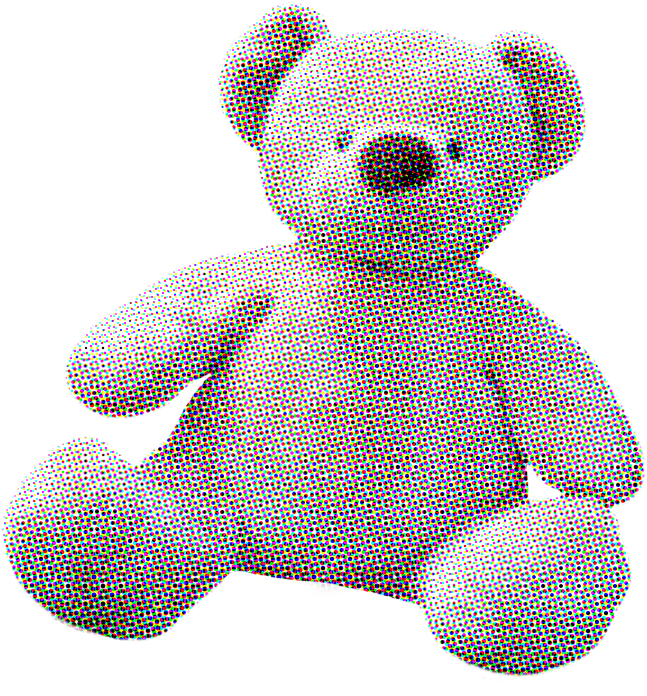 “Filling in an emotional need is exactly where kawaii plays a significant role,” writes Christine R Yano, a professor of anthropology at the University of Hawaii at Manoa and the author of Pink Globalization: Hello Kitty’s trek across the Pacific.
“Filling in an emotional need is exactly where kawaii plays a significant role,” writes Christine R Yano, a professor of anthropology at the University of Hawaii at Manoa and the author of Pink Globalization: Hello Kitty’s trek across the Pacific.
“Even in America, journalist Nicholas Kristof has written of an ‘empathy gap’ in today’s society,” states Yano. “He points to the place of objects that may be considered promoters of ‘happiness’, ‘solace’, ‘comfort’. When a society needs to heal, it seeks comfort in the familiar. And often the familiar may reside in ‘cute’. Witness the use of teddy bears as sources of comfort for firefighters in the wake of NYC’s 9-11. So I see kawaii things as holding the potential as empathy generators.”
Kumamon is a power station of empathy generation. In the weeks after the Kumamoto earthquake, Kumamon was so necessary that in his absence his fans simply conjured him up themselves, independently, as an object of sympathy, a tireless saviour, an obvious hero.
Three weeks after the 14 April earthquake, Kumamon visited the convention hall of the hard-hit town of Mashiki, where residents were still sleeping in their cars for protection as 1,200 tremors continued to rumble across the area. The visit was reported on TV and in the papers as news, as if a long-sought survivor had stumbled out of the wreckage alive.
The children, many of whom had lost their homes in the earthquake, flocked around him, squealing, hugging, taking pictures. Their friend had returned.
(A longer version of this article first appeared on Mosaic.)
***
More long reads
How comedy can change the way we think and act
The story of rise and fall of Kamal Gyawali: MD of Nepal’s ‘Lehman Brothers’







